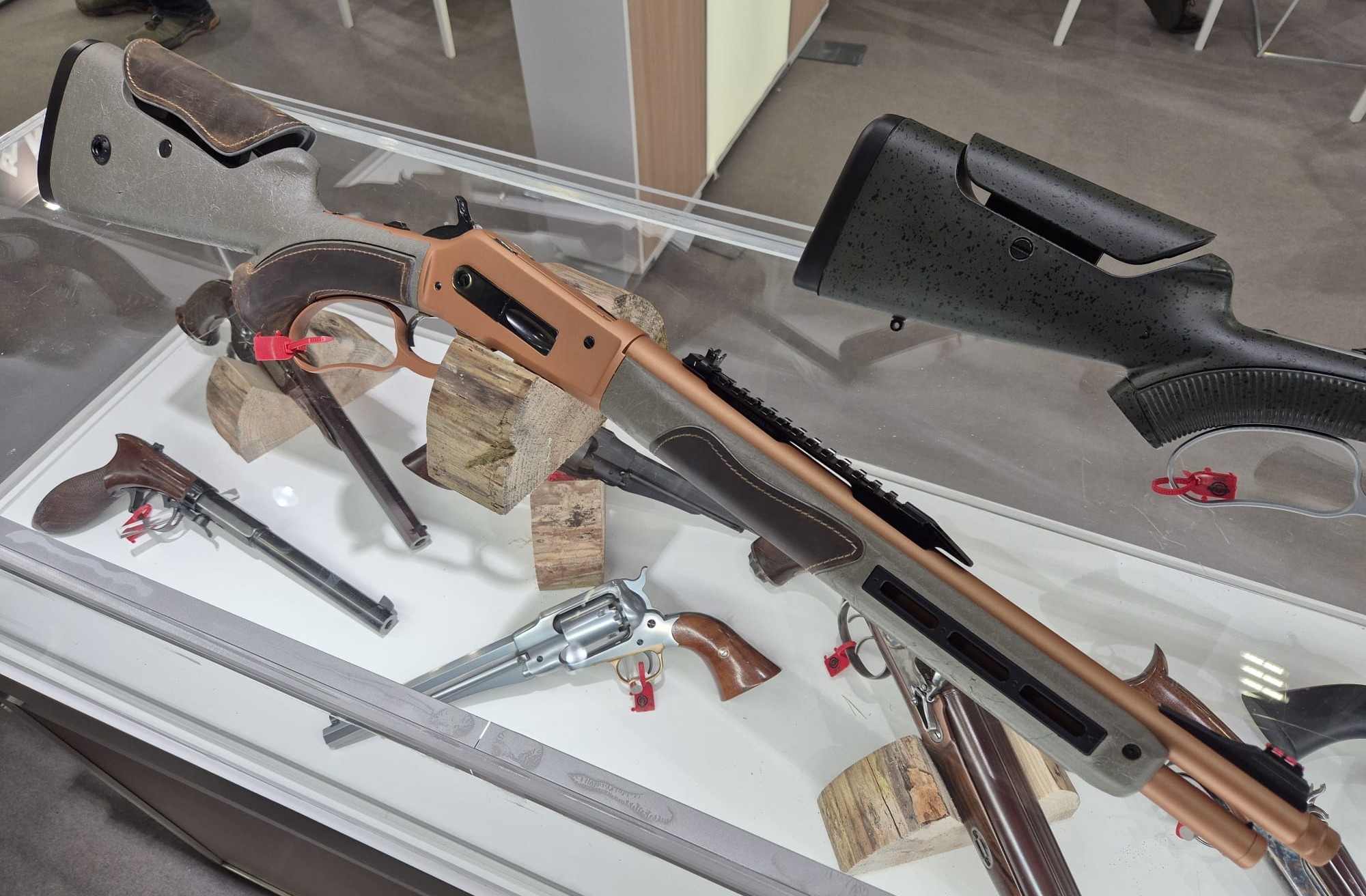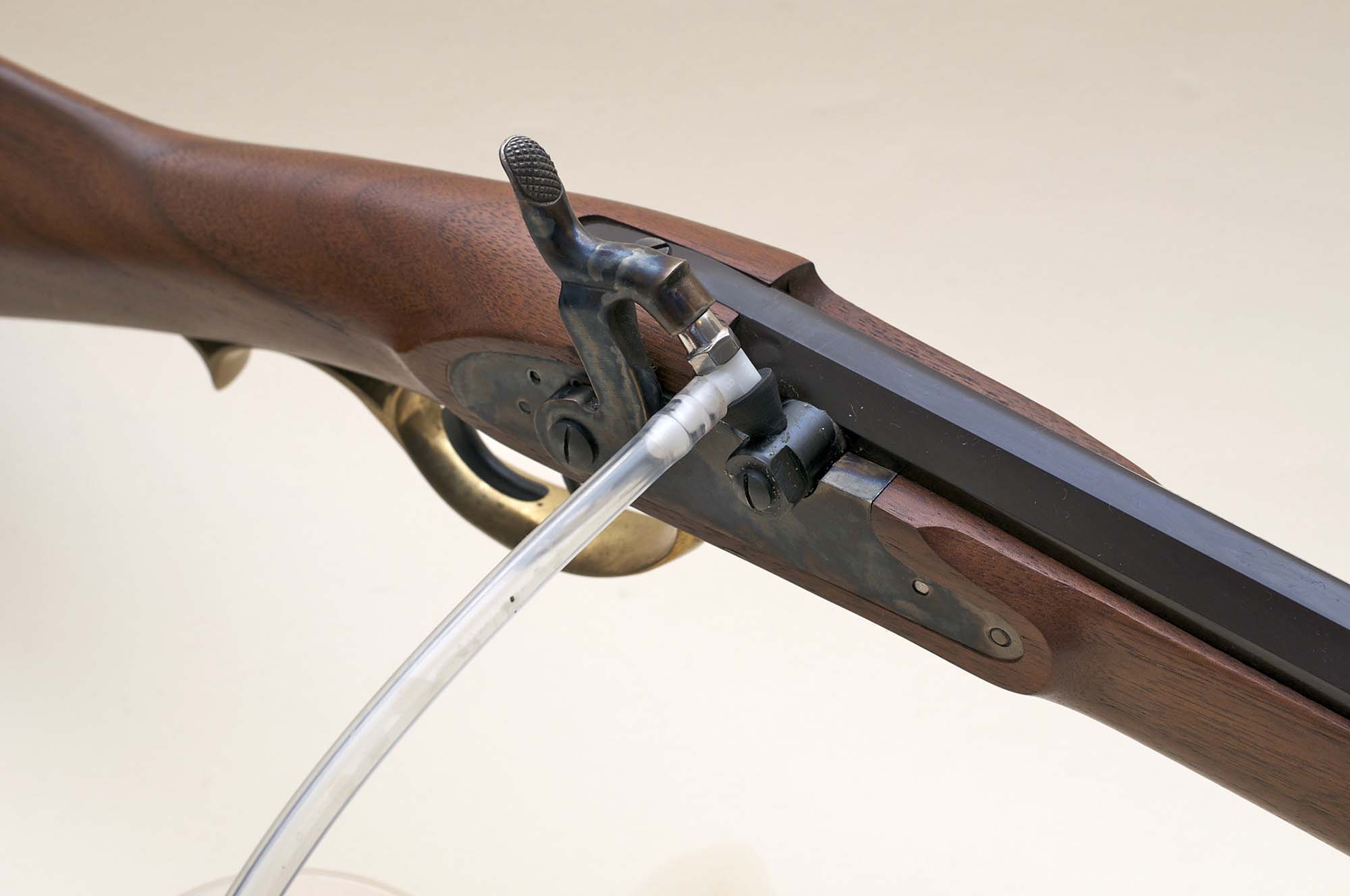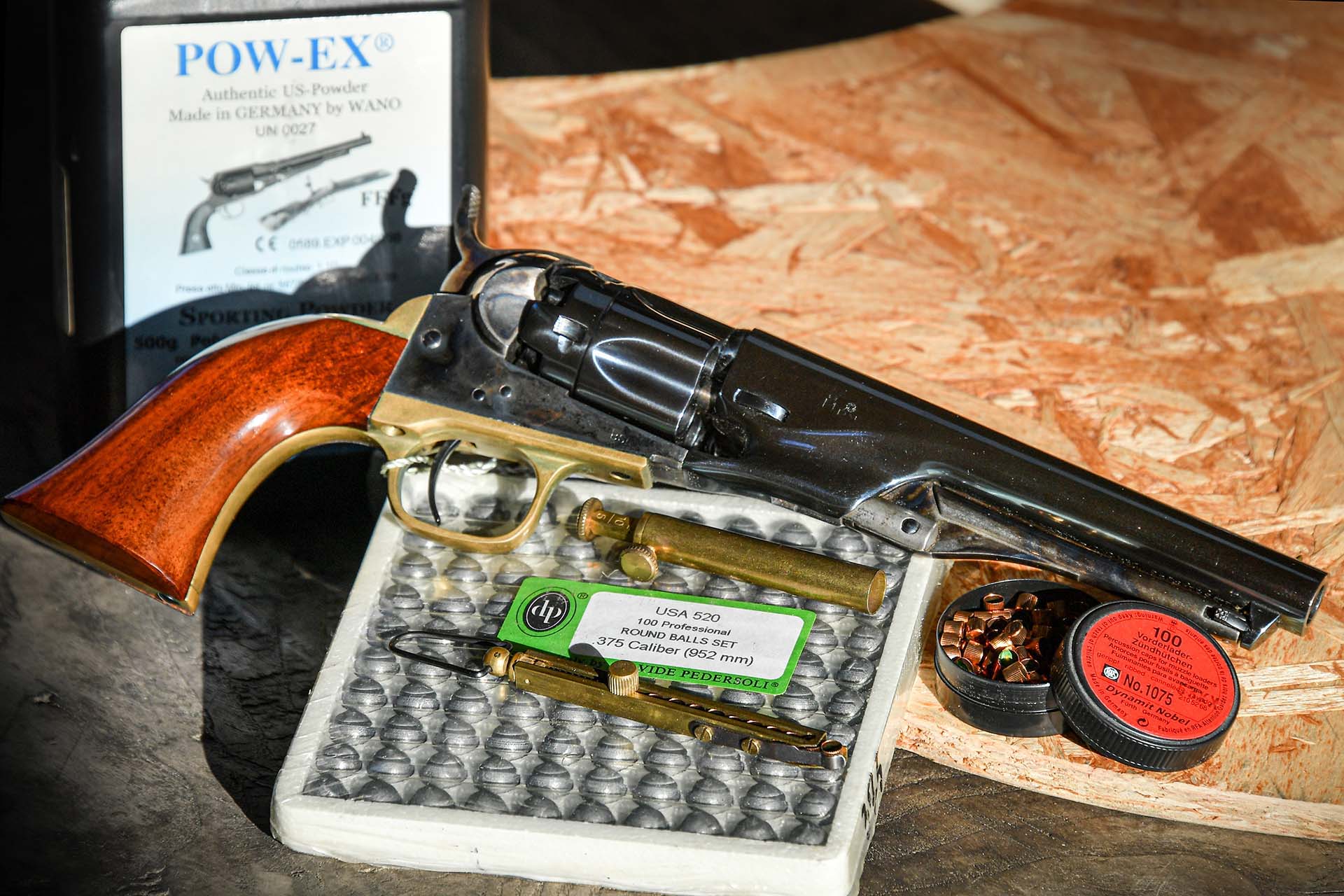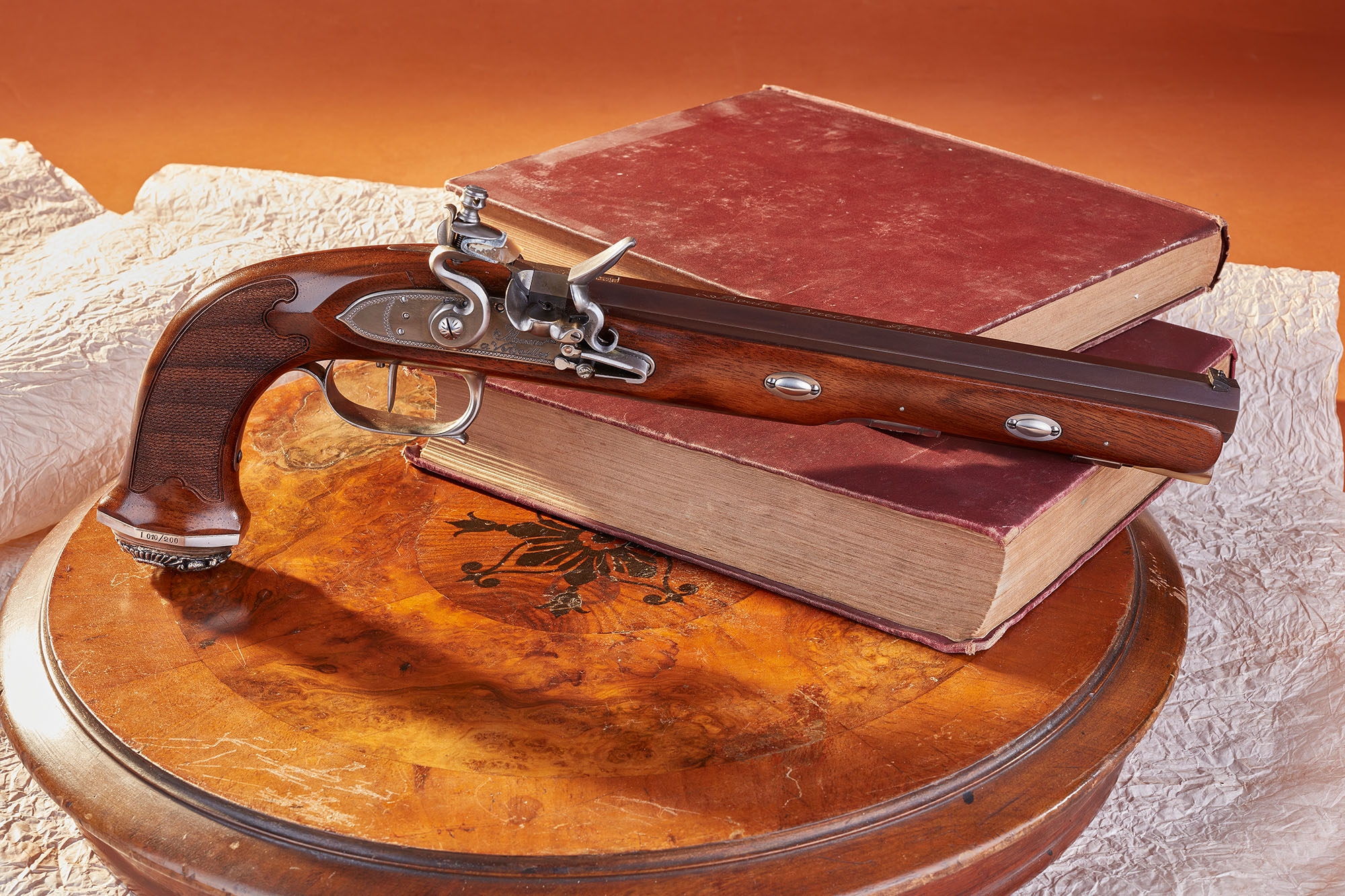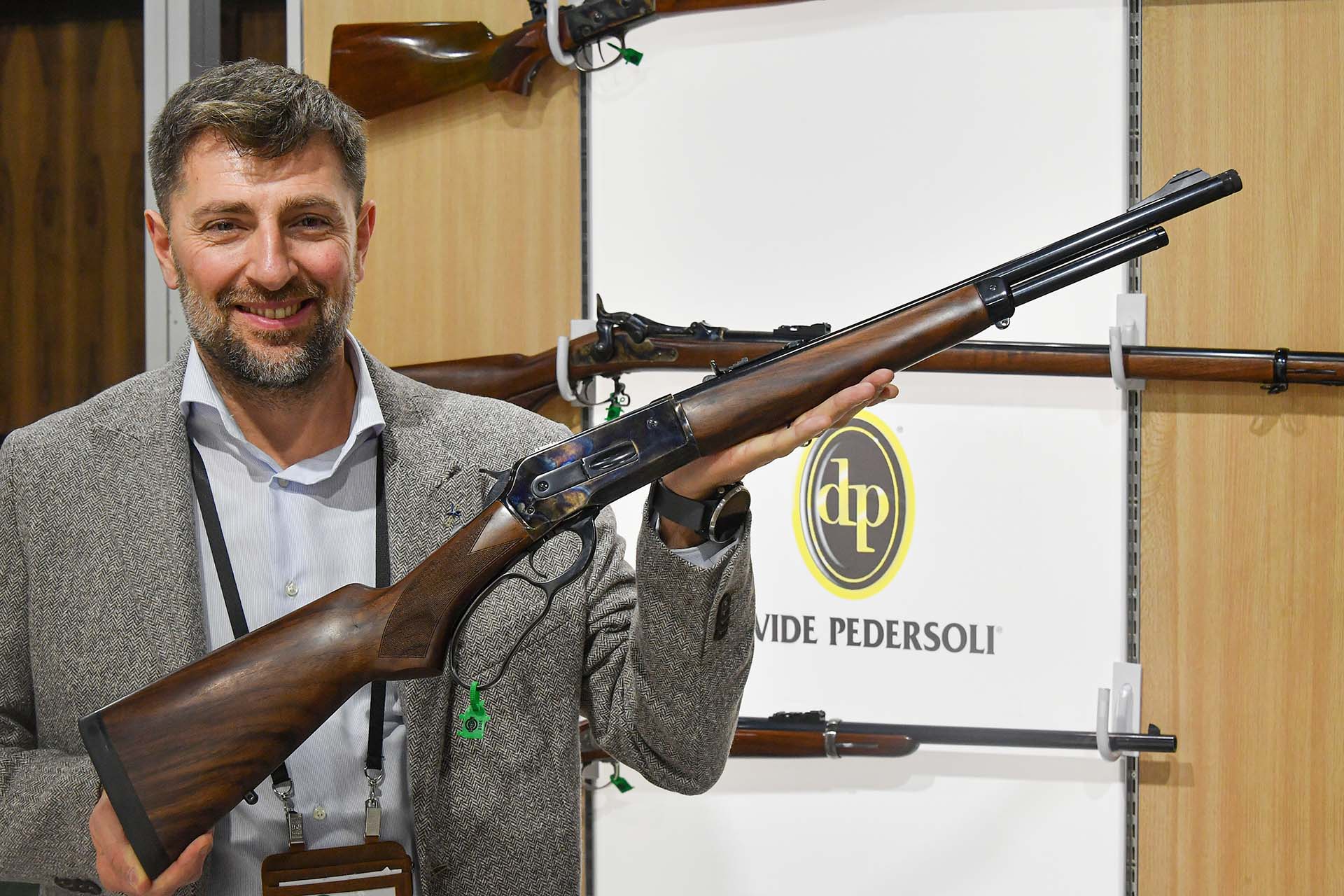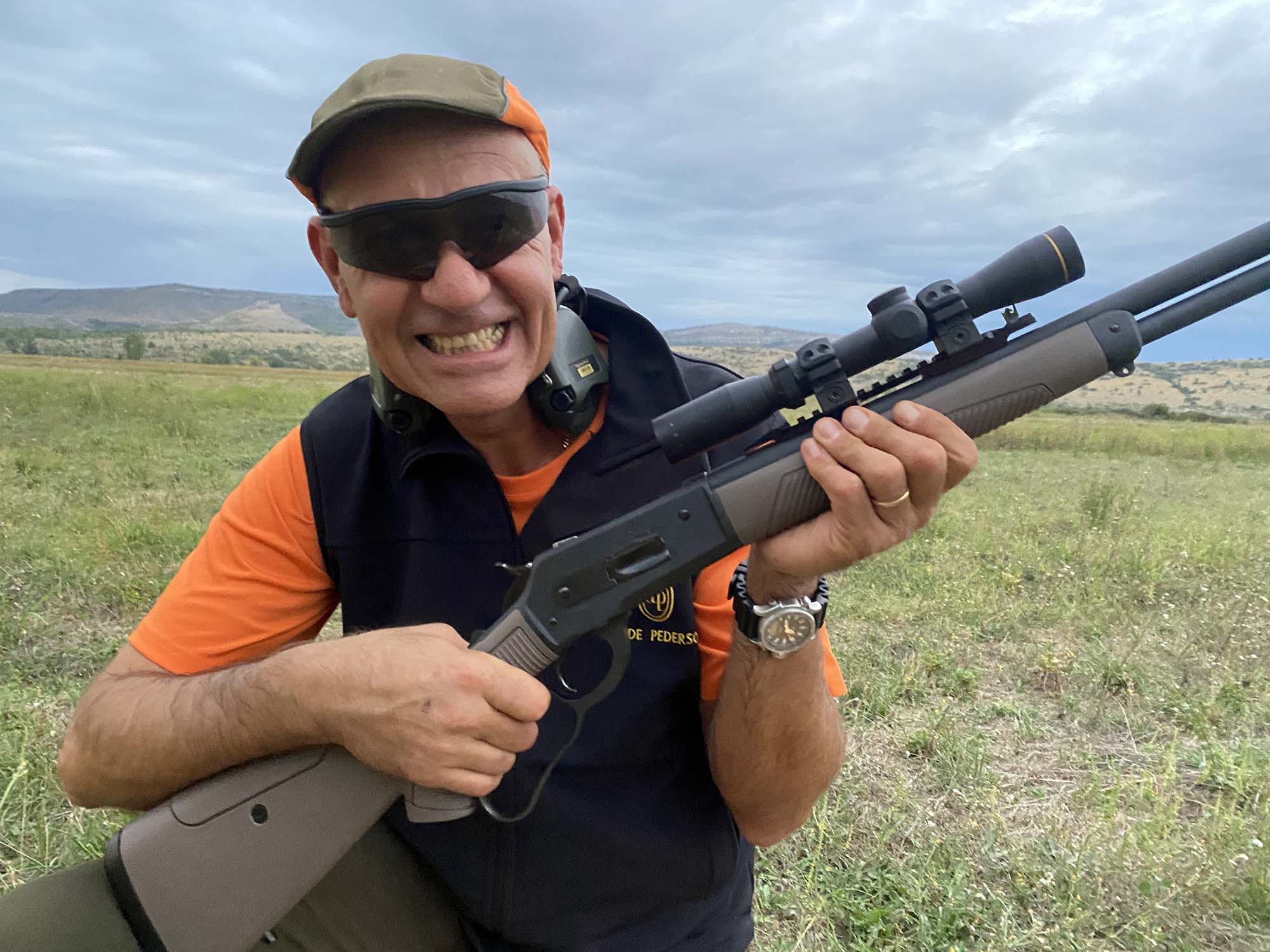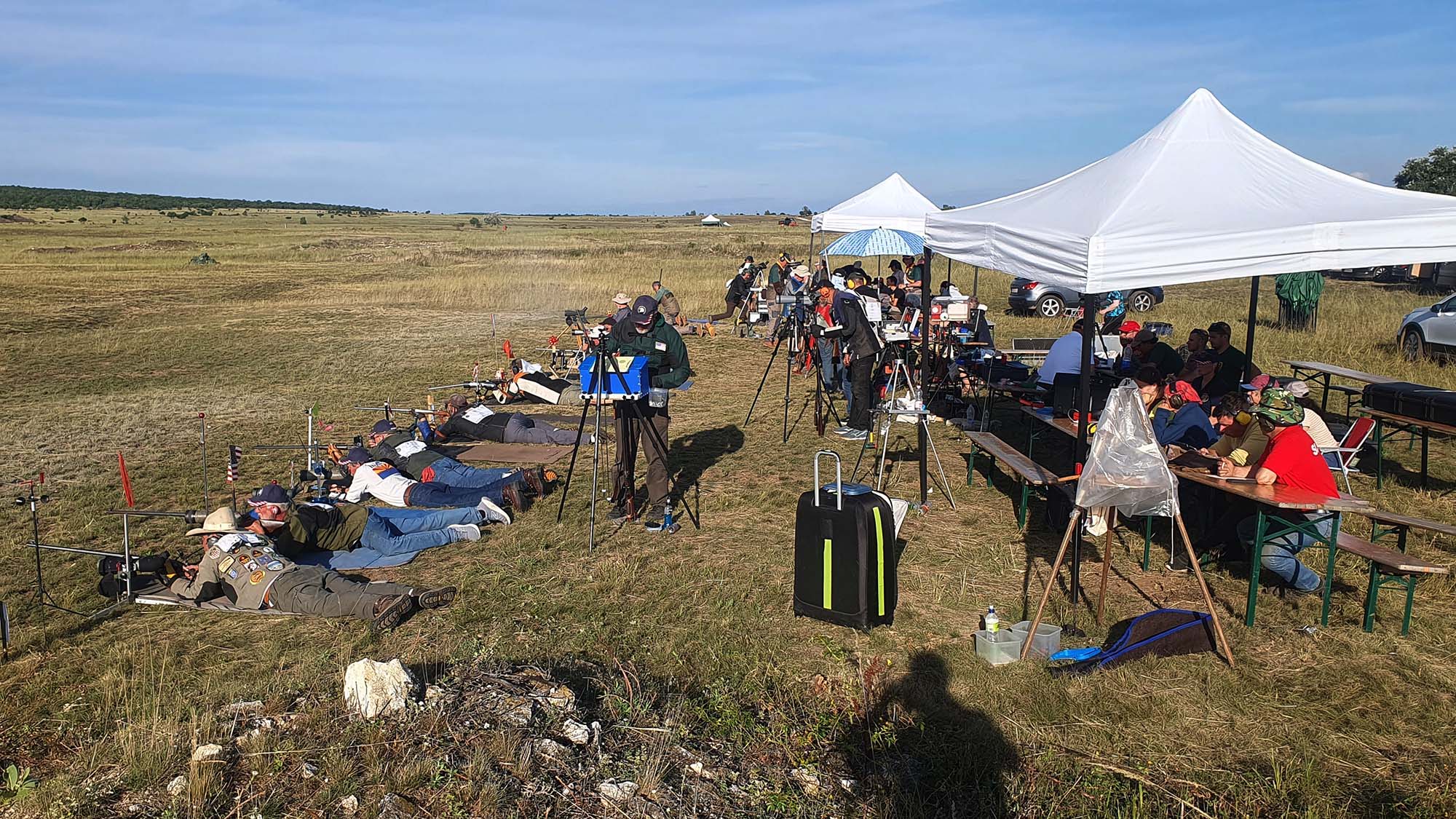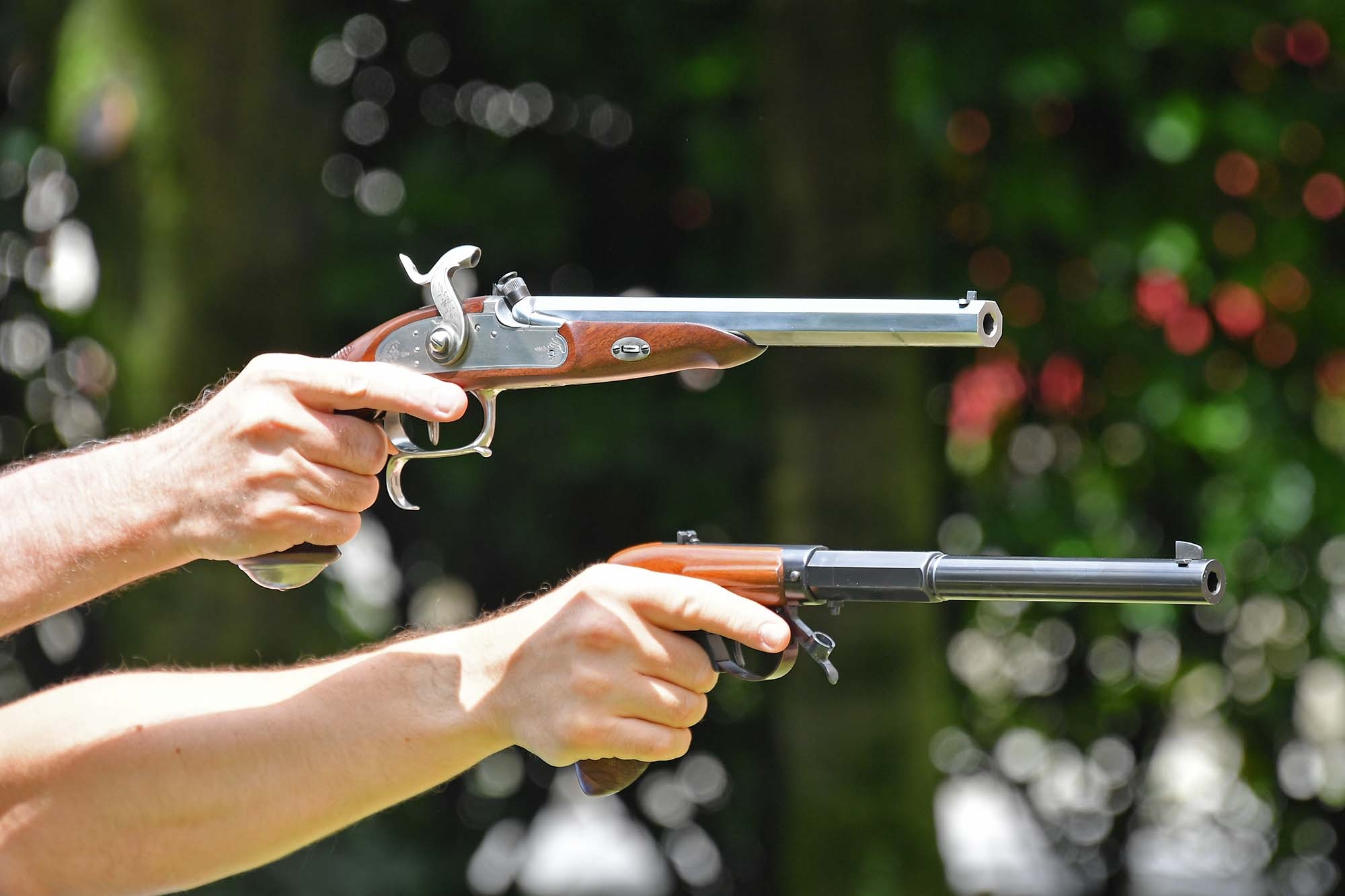Pedersoli's Boarbuster series has earned a firm place among fans of modern lever-action repeaters geared towards driven and boar hunting. In addition to the Mark II, the range includes the Shadow (gray synthetic stock, black action), Guidemaster (green silicone camo pattern, matte chromed metal parts), HV1 Camo (camo orange stock, matte black metal parts) and the Evolution tested here. This is a walnut stock version, protected by a transparent silicon finish. It comes with a stainless steel receiver with a reflection-reducing, matte gray Cerakote finish and fancy blued screws. The other steel parts are polished and blued. As an extra feature, the trigger guard and loading lever can be easily detached. Depending on the intended use, a lever with a larger or smaller loop can be mounted. To anticipate the test results, a sleek rifle of good quality.
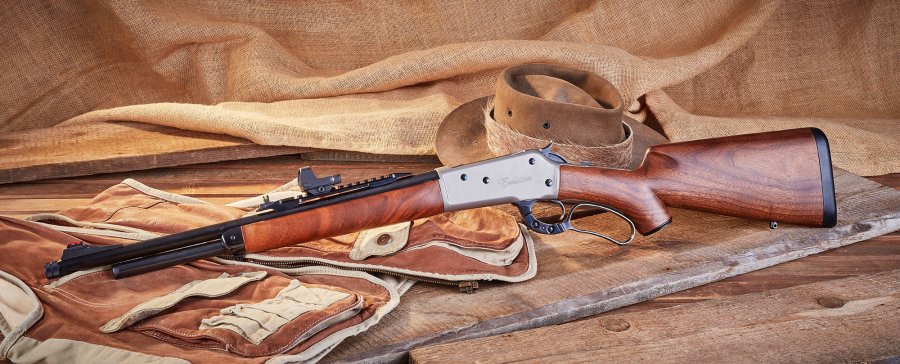
Pedersoli's Boarbuster variant, which we soon referred to only briefly as the "Evo," completed two range runs. In the first, we tested its function using Hornady FTX (250 grains), Remington Semi-Jacketed Hollow Point (300 grains) and WM Bullets Lead Flat Point (295 grains) cartridges. In addition, we wanted to see where the gun hit over open sights at a distance of 50 meters.
For the second run, we fitted a Leupold VX Freedom 1.5-4x28 scope with two sets of mounting rings on the factory-installed Picatinny rail.
First finding: the Pedersoli Evo went quickly into the shoulder and was full and fat. The stock configuration contributed to the good feel. The design of the two parts of the stock essentially corresponded to that of the Shadow, but the wood of the Evolution seemed more valuable and heavier, and the finish made everything feel safe and warm in the hands. Just as fine a feature as the well-buffered butt plate: when the rifle was in the aiming position, the target could be acquired in no time at all, both using the open sights and the Leupold optic, as well as with the UTG red dot sight mounted here for photo purposes. Then the Evo could be loaded flawlessly through the side loading gate, neither were there broken fingernails nor did one have to jam in the last cartridge against the force of the magazine spring with extreme effort: everything went smooth. When cycling, the rifle ran cleanly with all types of ammunition; there were no shakings when the cartridges went from the magazine to the rear of the carrier and from there to the top behind the chamber. Ejection of the fired cases also worked flawlessly. Second finding: the Evo was easy to repeat, but one of our team found it more comfortable to take it off the shoulder and lower it for this purpose, given the smooth but noticeable levering action. The Boarbuster Evolution's lever proved to be well made at the focal points, its inside being rounded and with beveled edges. Still, we would like to see a wrapping made of thin leather or paracord material.
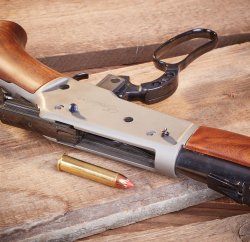
The trigger of the Pedersoli 1886/71 Boarbuster Evolution in .45-70 Government
Speaking of controls, the trigger didn't break until a full 3,390 grams, but it did so crisply and without overtravel. The design of the external hammer was first-rate, as all edges on the spur were finally rounded. The hammer was easy to cock and snapped cleanly into place. Directly behind it was a tang safety slide, which drew criticism from the testers. It did what it was supposed to do: if you saw the red dot behind it, the gun was operable and ready to fire; if the slide was above the dot, the trigger, lever and hammer were blocked. On the test gun, however, this part ran sluggishly and also simply got stuck in its end positions. Pedersoli should check this again and improve it.
The sights of the Pedersoli 1886/71 Boarbuster Evolution
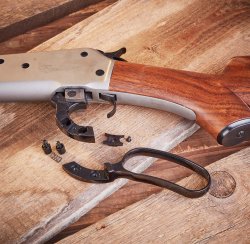
The design of the open sights was good – a red glow insert in the front sight, bordered by the rear sight by means of two poison green glow inserts. This works in the woods and on the range. Although the inserted front sight is fixed, the rear sight sits on two rails and these in turn on a slope at the front of the pica rail. In other words, after loosening a screw, you can adjust elevation. From the factory, the Evo shot correctly on target at 50 meters, albeit slightly to the left. The hits of the Hornady Monoflex, for instance, produced a good 40 mm group. So far, so good, but today's Central European hunter hardly ever fires through open sights. Leupold's Scout scope could be mounted and adjusted flawlessly, it offered a clear, sharp image without color fringes, tip-top. But because of the Evo rear sight, it had to be moved back a few notches. Thus, its eyepiece sat a good halfway above the ejection port and thus where the Pedersoli spits out the cases upwards after shooting. Fumbling out the cases in a way that was easy on the scope proved to be awkward. Since the testers did not want to take off the rear sight (in view of the quite sensitive fiber optic rods), the good scope had to be taken off again after a few shots and we continued "topless", i.e. using the rear and front sights. Nevertheless, we were able to get a respectable number of hits.
Pedersoli 1886/71 Boarbuster Evolution specs and price
| Model: | Pedersoli 1886/71 Boarbuster Evolution |
| Price (RRP in Germany): | 2,250 euro |
| Caliber: | .45-70 Government |
| Magazine Capacity: | 5 rounds |
| Overall Length: | 974 mm |
| Barrel Length: | 482 mm (19") |
| Barrel Twist: | 1:18" |
| Trigger Pull Weight: | 3,390 g (average) |
| Weight: | 3,600 g |
| Features: lever-action repeater, Cerakote-coated receiver, walnut
stock with silicone finish, other metal parts polished and blued. | |
Pedersoli 1886/71 Boarbuster Evolution: our test conclusion
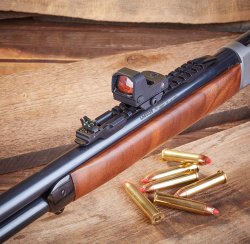
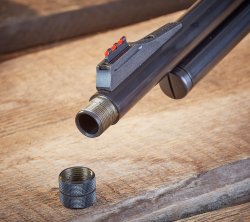
So the crux of the beautiful and nice rifle is the sights: when using a Scout scope, you must take care a) to place the mounting rings far back on the optic (as far as the center piece with the turrets allows that) and, b) to place the mount as far forward as possible. This way the eyepiece of the Leupold used should not be just above the ejection port. Since the cases usually come into the open without a bullet, nothing should get in each other's way. The rear sight should definitely be lowered: this is the only way the Scout could be moved further forward while retaining the rings used. Or you could use a much higher mount, but then you have to check whether this is compatible with fast aiming. You could also fit a Ghostsight on the (already drilled and tapped) bolt or (as in the picture) use a red dot sight. Lastly: like the Shadow, Pedersoli's Evolution Boarbuster offers the option of adding a side mount to the left side of the receiver. Matching holes are provided. Pedersoli advertises this, but the test gun still came without such a side mount. It would be interesting to see to what extent such a mount allows the use of a rear sight and front sight and how the clearly different angulation of the sight elements affects the point of impact: test to follow as soon as available.
| What we liked: | What we liked less: |
- Excellent stock elements, very grippy | - Safety somewhat stiff |
- Flawless function, good quality | - impractical sights arrangement |
| - Easily interchangeable Lever |
For more information on the Pedersoli 1886/71 Boarbuster Evolution please visit the Pedersoli website.
Text: Hamza Malalla and Matthias S. Recktenwald



